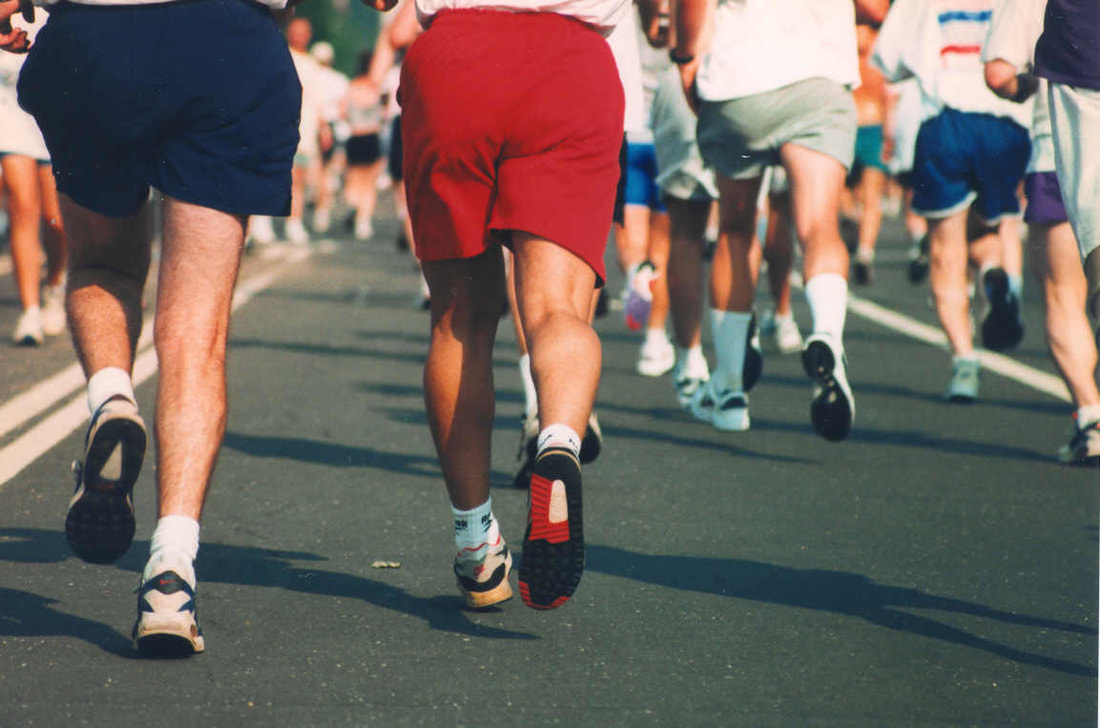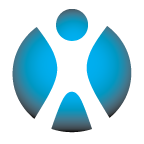|
11/6/2017 Six Ways to Improve Your Running Performance This Offseason - Part II: Posterior Chain MobilityRead NowLoosen Up Tight Calves, Hamstrings, & Glutes With These Stretches Now that we have covered how to improve foot and ankle mobility in our last blog post, our next task will be to improve mobility through the posterior chain! The posterior chain is defined as the group of synergistic muscles on the back of the leg such as the calf, hamstring, and glute muscles. Posterior chain immobility is common among runners who have significantly increased running workload, introduced speed work prematurely, lack functional cross-training, or sit too much. Posterior Chain Biomechanics: The Calf The calf is made up of two muscles (gastrocnemius and soleus) and they play an important role throughout the running cycle. When the foot is first landing on the ground, the calf is tasked to slow down knee flexion and ankle dorsiflexion and foot pronation. The calf is then used to extend the knee and assist in propelling the body forward to the next step. If calf length is limited, increased forces will be absorbed at the knee, foot, and ankle instead of through the muscle itself. This impairment could lead to common running injuries, like stress reactions, shin splints, or plantar fasciitis as well as a number of other issues further up the chain. Posterior Chain Biomechanics: The Hamstrings Other posterior chain mobility dysfunction may occur as a result of tight hamstrings. The hamstrings are made up of four different muscles (biceps femoris long head, biceps femoris short head, semimembranosus, and semitendinosus). These muscles attach to various locations on the pelvis, thigh bone (femur), and back of the shin (tibia) and functionally act as knee extensors (when the foot is on the ground during running, squatting, walking, etc). Although hamstrings do flex the knee when the foot is not on the ground (think flexing your knee to lift your heel to your butt), this is not their primary function despite what you might read online or in text books. The hamstrings do most of their work when the foot is first loading onto the ground - their job, like the calf muscles, is to slow down the forward momentum of the knee. By decelerating this motion, the knee will stop flexing and extend as the femur moves forward over the tibia. At the same time the hamstrings are decelerating knee flexion during foot strike, they also work to decelerate the pelvis tilting forward (anteriorly) in space. During late stance phase, the hamstrings serve to help posteriorly tilt the pelvis to drive hip extension and further extend the knee to assist with the foot pushing off the ground. Overly shortened hamstrings lead to excess stress on the knees and low back, primarily during the initial phase of loading onto the foot while walking and running. Keep in mind that we have only really discussed one plane of motion in the above analysis. The hamstrings actually play a critical role, like all muscles, in all 3-planes of motion. Posterior Chain Biomechanics: The Glutes The glutes are a classic mobility issue for most runners. If you remember from our blog post ‘Dead Butt Syndrome’, the glutes can become relatively inactive due to our culture of sitting and most exercise being limited primarily to the sagittal plane (running, biking, swimming). The glutes and other hip external rotator muscles work together to decelerate the turning in of the femur during the initial loading phase of gait and rotate the femur outward during the late stance phase of gait. When the glutes are tight, the femur will be unable to turn in properly during foot strike which makes it difficult for the glutes to stretch and gain the potential energy necessary to assist in decelerating ground reaction forces. This chain reaction is necessary to propel the body forward and help as the leg pushes off the ground. Tight glutes also contribute to low back pain more directly by limiting the pelvis’ ability to tilt anteriorly during foot strike as well as to rotate over the femur (hip internal rotation) throughout the later stages of stance phase of gait. Take Care of Your Posterior Chain! Mobility will be improved with consistent, intentional movements, over and over, day after day. Without this consistency, results will be delayed! It is imperative to continually find time before and after your run or workout to improve posterior chain mobility and decrease your chances for running related injuries and improve your performance. Dr. Dan Benson, DPT, OCS, FAFS
Forefront Physical Therapy Belltown & South Lake Union 2720 4th Ave Ste 115 Seattle, WA 98121
0 Comments
Your comment will be posted after it is approved.
Leave a Reply. |
Details
Forefront AuthorsWe love writing about injury prevention and functional exercise. We want everyone to share in our motto: movement for a healthy life! Archives
June 2020
Categories
All
|
Signup To Be At The Forefront Of Injury Recovery & Fitness Tips!
Get out of pain and move better!
Scheduling & Inquiries
hello@forefrontpllc.com
Call or Text: (206) 279-2870
Fax: (206) 279-2872
Mailing Address
Forefront Physical Therapy ● 2212 Queen Anne Ave N #333 ● Seattle, WA 98109
Scheduling & Inquiries
hello@forefrontpllc.com
Call or Text: (206) 279-2870
Fax: (206) 279-2872
Mailing Address
Forefront Physical Therapy ● 2212 Queen Anne Ave N #333 ● Seattle, WA 98109
Billing Questions
cclemmons@omnimbs.com
cclemmons@omnimbs.com
Movement For A Healthy Life
Employment Opportunities
Forefront Physical Therapy operates on an entirely paperless system
Frequently Asked Questions
Employment Opportunities
Forefront Physical Therapy operates on an entirely paperless system
Frequently Asked Questions
© 2023 Forefront Physical Therapy, PLLC


 RSS Feed
RSS Feed
